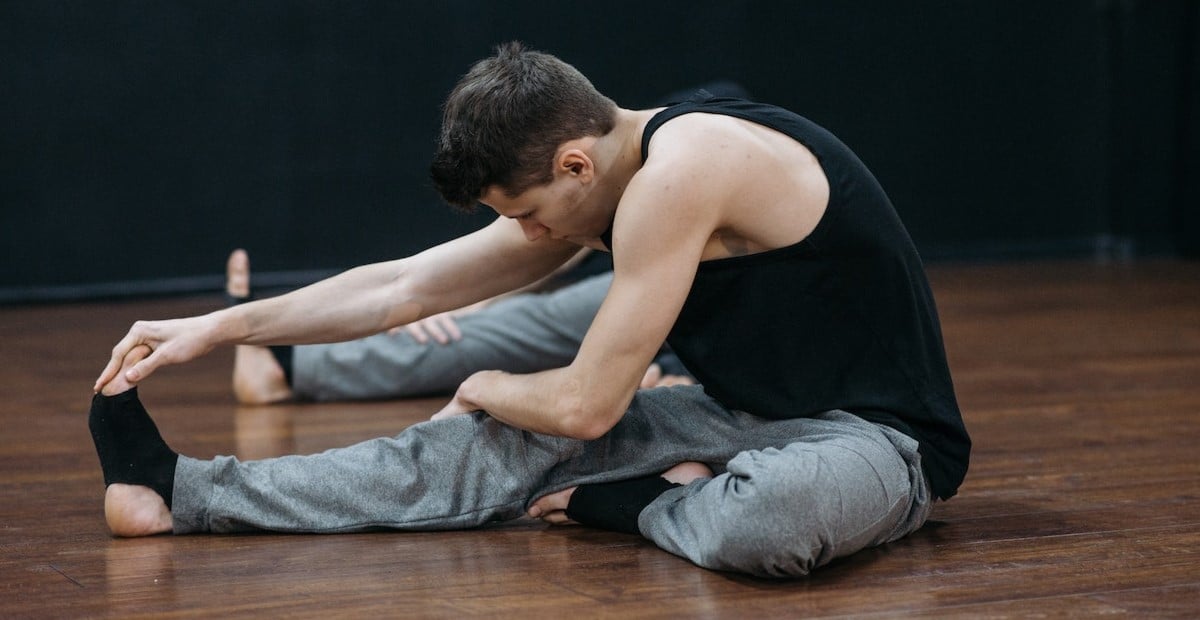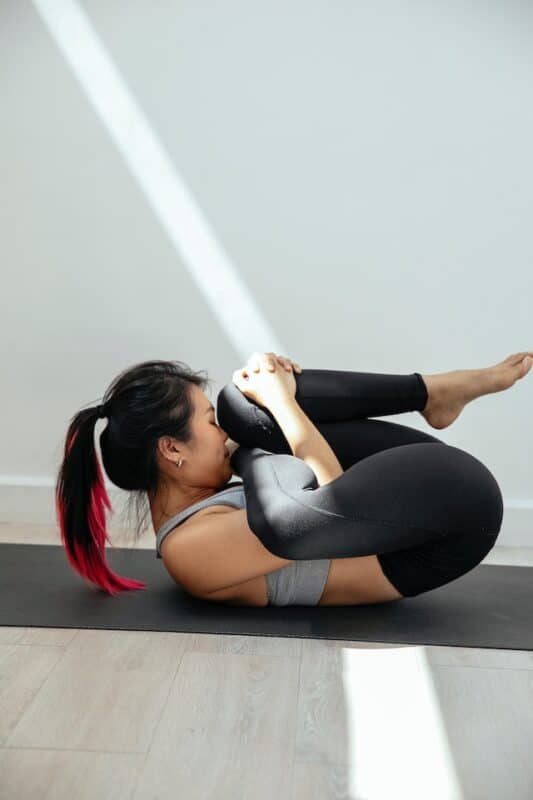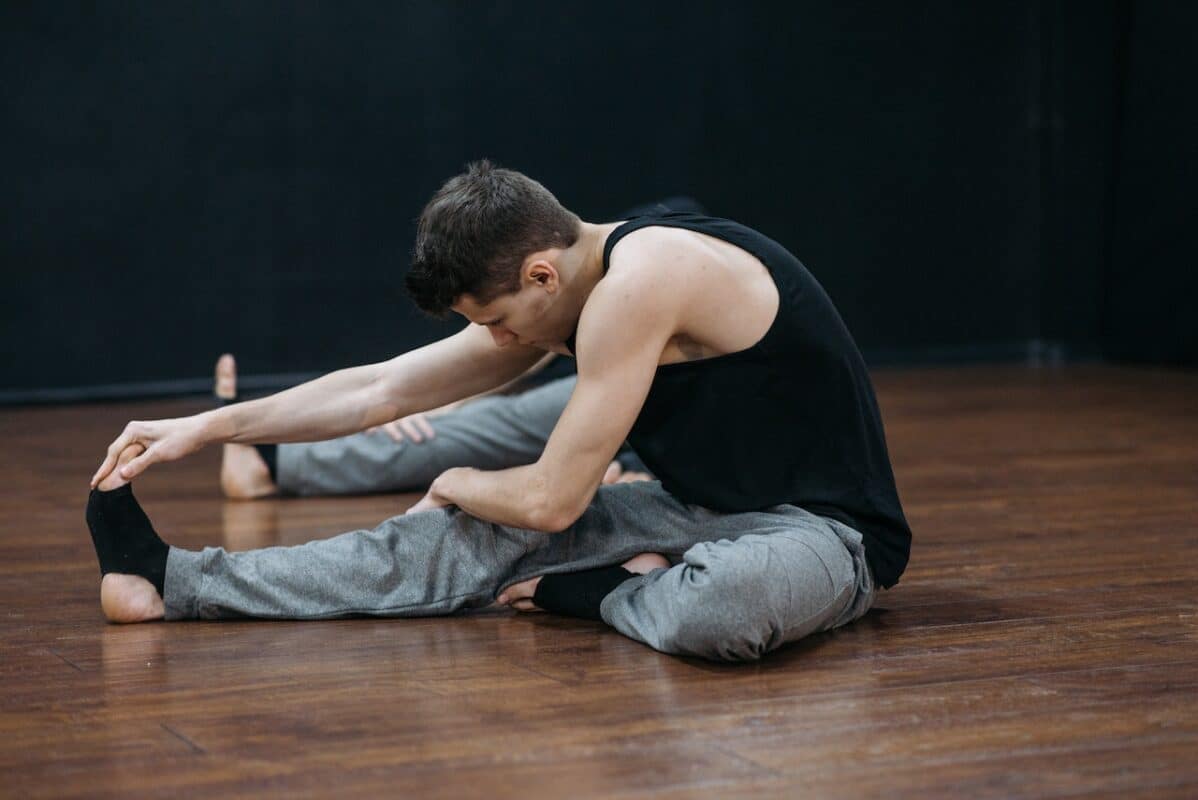
Contents
Treating tight hamstrings with hamstring muscle exercises to reduce hamstring tightness
Think about pulling on a rubber band for a moment. The more you pull that rubber band the more elastic it becomes; the looser or larger the band ends up; the easier to adjust and manoeuvre it becomes too.
Your muscles, just like any physical elastic object in this world, behave in similar ways. So, if you have tight muscles, then, in theory, all you need to do is practice stretching them. Of course, in the world of fitness, things can be a little more complicated than that. Our elastic band in the above analogy, for example, doesn’t feel pain.
You do.
But that’s exactly why it’s important to employ stretching into your routine, and even though you may feel a little pain when you stretch, it’s worth it for the easing of aching that comes as a result.
Tight hamstrings are common. Runners know this fact, but most runners and trainers are aware of the many stretches that help prevent hamstring injury and other issues that come with hamstring muscles.
So, let’s equip you with that very knowledge so you can leave the money you’d be forking out to a physical therapist well within your wallet.
Stretch 1 – The lying Hamstring Stretch
- Lie down on the ground with your back flat and your feet on the ground, knees bent.
- Slowly bring your right knee to your chest.
- Extend the leg while keeping the knee slightly bent. You may use a yoga strap or rope to deepen your stretch, but don’t tug on it too hard.
- Hold for 10 seconds and work up to 30 seconds.
This classic exercise also activates the abdominal muscles, the three hamstring muscles that make the majority of movement and helps with sciatica pain relief. Brilliant!
Stretch 2 – The Seated Hamstring Stretch
- Sit on the ground in a butterfly position.
- Extend your right leg with your knee slightly bent.
- Then bend forward at your waist over your right leg.
- You may hold your lower leg for support, but don’t force the stretch.
- Hold for 10 seconds and work up to 30 seconds.
Utilising your lower back muscles too, these hamstring stretches help with hip flexors (hip flexion) and a strong range of motion for the hammies! Most hamstring injuries come from overworking or not stretching properly, but also using the same stretch over and over can be bad, too, so mix it up.


Conclusion
These are just two stretches provided by our good friend Healthline. Check out more and be good to your hamstring muscles. Tight hamstrings are good for nobody, especially runners. You could try hamstring stretching exercises found all over the web, and chances are they’d be worthwhile, so the question remains, is your muscle health too?
FAQs
What is the best hamstring stretch
There’s no such thing as the best, but some will be suited to you over others. It’s subjective, so find yours out now.
What are hamstring curls?
The hamstring curl, also called a leg curl, is an exercise that strengthens the hamstrings.
How long does it take to recover from a hamstring strain?
There are 3 grades of hamstring injury which are: grade 1 – a mild muscle pull or strain, grade 2 – a partial muscle tear grade 3 – a complete muscle tear.
The length of time it takes to recover from a hamstring strain or tear will depend on how severe the injury is. A minor muscle pull or strain (grade 1) may take a few days to heal, whereas it could take weeks or months to recover from a muscle tear (grade 2 or 3). The hamstrings The hamstrings are tendons (strong bands of tissue) at the back of the thighs that
How’s best to treat chronic hamstring tightness?
It’s important to know the difference so no further damage to the hamstring muscle is caused. ‘Treating chronic hamstring tightness should be done via manual physical therapy or massage therapy which is very effective,’ advises McGrath. Yoga , suggests Knapton, can be useful to increase hamstring flexibility. Often, it’s not just the hamstrings that are tight, so it’s important to stretch the quadriceps and hip flexors too. An important feature of addressing tight hamstrings is actually by strengthening the muscles around the hamstring, as well as the hamstrings themselves.